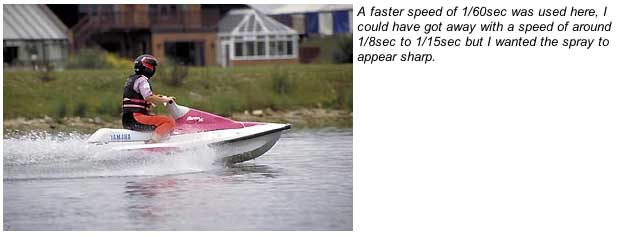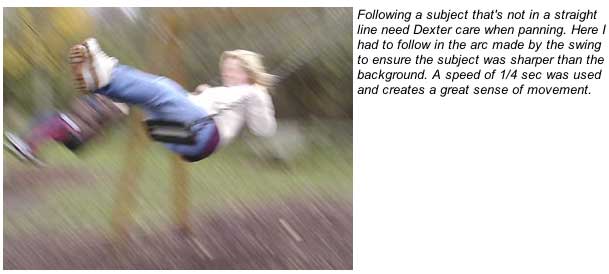Camera panning technique
Learn how to keep up with the action
Words and Picture Peter Bargh
The shutter speed is measured in fractions of seconds. A slow speed may be 1/15 second or slower and a fast speed is anything above 1/125 second. To take pictures of moving subjects you have several options. The most obvious is to select a fast shutter speed to freeze the subject. If the selected shutter speed is faster than the subject speed you're likely to stop it in its tracks, but that's a disadvantage. If you stop a moving car in its tracks it will look static and lack impact. A better technique is to select a slower speed and follow the subject as you take the photograph. This is panning.

If you pan at the same speed as the subject it will appear sharp against a streaking blurred background. To ensure smooth results keep your feet still and rotate the top half of your body as you track your subject. Prefocus your camera at a point where your subject will pass to ensure the picture is sharp. Also ensure the background isn't too light and doesn't have shapes as this can create ghostlike effects or streaks in the image. A darker background is better.

Make sure you press the shutter when the subject reaches a mid point along your panning track to ensure it's in the best position and try to follow without moving up or down to prevent subject blur.



Another technique to try is slow sync flash where you use a slow shutter speed and flash. The flash freezes the subject in motion as it fires and the long shutter speed ensures the background is blurred. Again the technique is to get the panning speed correct. Too slow and you'll see the bike trail too and merge into the background blur (left). Too fast and everything freezes (right). A good speed is about 1/8-1/15sec.

